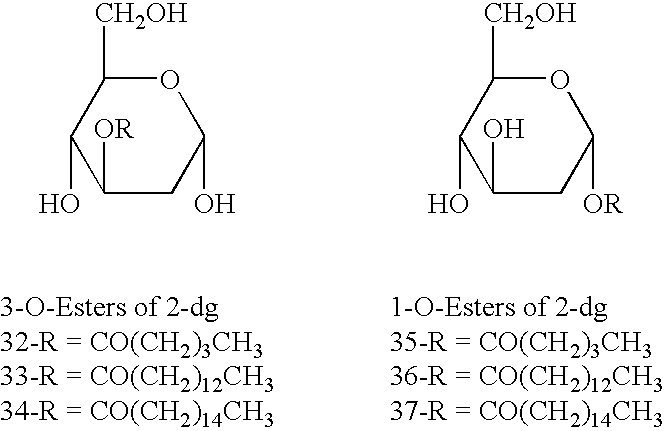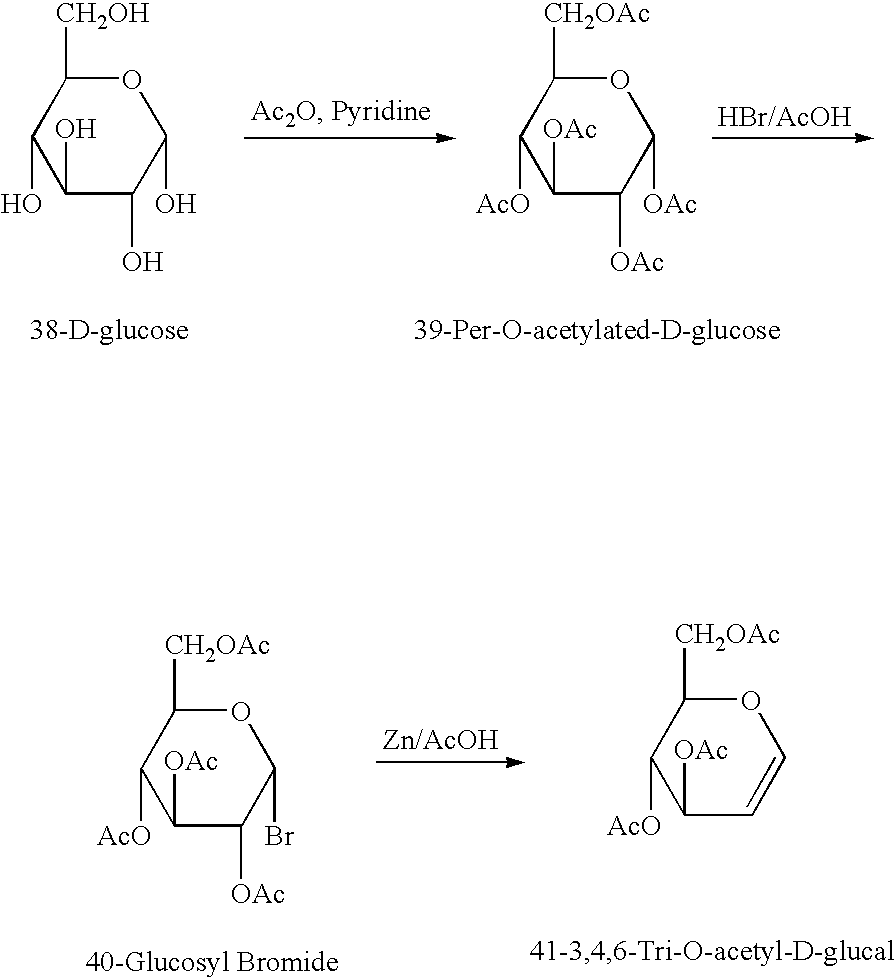Cancer treatment including glycolytic inhibitors
a glycolytic inhibitor and cancer technology, applied in the direction of biocide, drug composition, active ingredients of phosphorous compounds, etc., can solve the problems of no definitive data to date to confirm, and achieve the effects of increasing the appearance of glucose receptors, and increasing the uptake and utilization of glucos
- Summary
- Abstract
- Description
- Claims
- Application Information
AI Technical Summary
Benefits of technology
Problems solved by technology
Method used
Image
Examples
Embodiment Construction
The present invention identifies classes of novel compositions and novel methods of using them, as well as novel methods of using classes of known compositions to kill anaerobic tumor cells and to enhance the effectiveness of aerobic treatments for killing aerobic tumor cells.
The inventors have identified six categories of glycolytic inhibitors that can be used according to the present invention.
1. Analogs that Increase Tumor Targeting and Uptake:
(a) Lipophilic analogs of 2-deoxy-D-glucose.
In order to increase the uptake of 2-deoxyglucose into the inner core of slow growing anaerobic cells, increases in lipophilicity aids in penetration and therefore higher levels reaching these inner cells. In part, such analogs might also work as lipophilic prod rugs of 2-deoxy-D-glucose.
Examples: Lipophilic analogs include derivatives of hydroxyl groups like esters, ethers, phosphoesters, etc. Others include the removal of the hydroxyl group and replacement with halogens like fluorine ...
PUM
| Property | Measurement | Unit |
|---|---|---|
| Composition | aaaaa | aaaaa |
Abstract
Description
Claims
Application Information
 Login to View More
Login to View More - R&D
- Intellectual Property
- Life Sciences
- Materials
- Tech Scout
- Unparalleled Data Quality
- Higher Quality Content
- 60% Fewer Hallucinations
Browse by: Latest US Patents, China's latest patents, Technical Efficacy Thesaurus, Application Domain, Technology Topic, Popular Technical Reports.
© 2025 PatSnap. All rights reserved.Legal|Privacy policy|Modern Slavery Act Transparency Statement|Sitemap|About US| Contact US: help@patsnap.com



